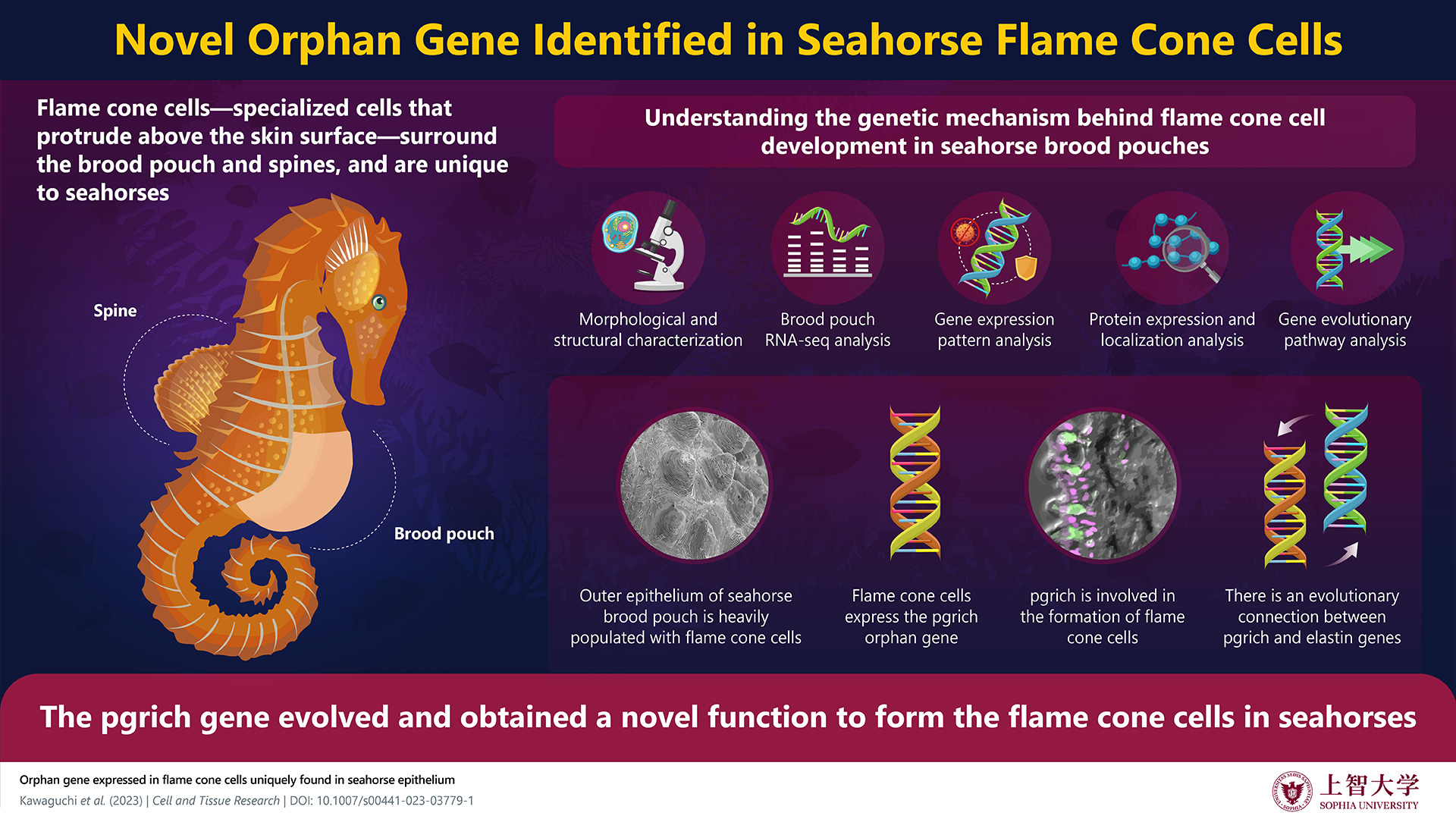Now, a team of scientists led by Assoc. Prof. Mari Kawaguchi and Prof. Shigeki Yasumasu from the Department of Materials and Life Sciences at Sophia University have identified an ‘orphan’ gene—a gene with no identifiable homologous sequences in other species or lineages—in the seahorse Hippocampus abdominalis. They believe that this gene, called the proline-glycine rich (pgrich) gene, is linked to the development of the flame cone cells in the brood pouch. Their findings were published in the journal Cell and Tissue Research, on 25 May 2023.
Expanding the reason behind pursuing this investigation, Dr. Kawaguchi says, “Seahorses have fascinating morphology, and males carry embryos in their brood pouch. The occurrence of male seahorses giving birth is a rare phenomenon in the animal kingdom and makes the seahorse a model organism to study evolution. We were keen to identify the genes responsible for forming the flame cone cells in the brood pouch.”
The team first paired histological staining with electron microscopy to confirm that the flame cone cells were present on the outer epithelium of the brood pouch in H. abdominalis, but not in U. nanus or S. schlegeli. Next, in situ hybridization and immunohistochemical methods revealed that the pgrich gene was expressed and its protein was localized in flame cone cells of the body surface.
The amino acid sequences of protein product of pgrich gene, PGrich showed partial similarity with the translated amino acid sequence deduced from the antisense strand–the noncoding part–of greater pipefish elastin gene. Through sequence analyses, the team uncovered many transposable elements around the pgrich gene. They propose that the pgrich gene might have evolved from the elastin gene in pipefish and subsequently obtained a novel function in the formation of flame cone cells, which are unique to seahorses.
As the team continues to piece together the evolution of the seahorse brood pouch, Dr. Kawaguchi concludes, “The evolutionary history of the pgrich gene may provide clues as to how the orphan gene came to be and how the brood pouch developed in this lineage. Seahorses are popular in home aquariums, and understanding these phenomena will contribute to people’s fascination with these fish!”


